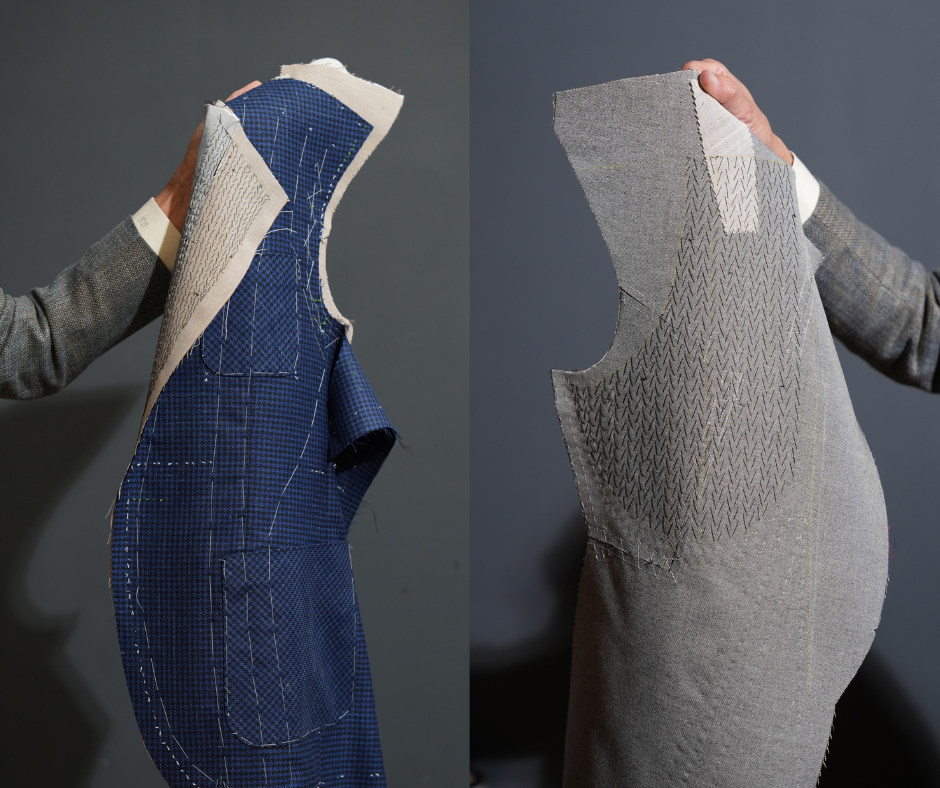The Canvas In Between: An inside look at the structure that shapes your suit
What’s a canvas?
A suit’s structure doesn’t happen by chance. At its core lies a carefully placed layer—called the canvas—positioned between the outer cloth and the inner lining. This canvas, often hand-stitched, provides shape, structure, and longevity. Imagine the contrast between a T-shirt that hangs loosely and a suit that embraces your form with elegance and intention—this is the power of the canvas.
Hand-stitched canvases
Fused and Half Canvas
A fused suit uses heat and adhesive to bond the outer fabric directly to the lining. While it is the most affordable option, it sacrifices breathability, comfort, and long-term fit. This method often produces a less natural, rigid garment—and over time, the fused layers may bubble or detach, revealing the telltale signs of a shortcut.
A half canvas suit introduces structure where it matters most: the chest and lapels, extending from the shoulders to the midsection. This partial hand-stitching enhances durability and allows the suit to better conform to the wearer’s body. It’s a middle ground—offering a refined silhouette without the full investment of time and craftsmanship required for a fully canvased suit.
Our head tailor in the process of hand-stitching a canvas for a black tuxedo
A full canvas suit and why we do it
At Sein Shwe Bespoke, we craft the majority of our suits with a full canvas construction. This method extends the hand-stitched canvas throughout the entire jacket, from shoulder to hem. It offers unrivaled flexibility for adjustment, enabling the tailor to handcraft a truly bespoke fit.
A hallmark of the full canvas is its lapel roll, achieved through a meticulous technique called pad-stitching. Unlike machine-pressed suits that flatten the lapel, pad-stitching coaxes it into a gentle, natural curve—much like a barrel wave shaping itself around a daring surfer.
A detailed look at pad-stitching handiwork
One of the foundational materials we use is horsehair canvas, prized for its strength, breathability, and ability to hold shape. This traditional material lends the suit a refined drape and structured silhouette that adapts to the wearer over time.
Depending on the weight and character of the outer cloth, we may opt for heavier or lighter canvas compositions to achieve the right balance. Alongside horsehair, we also use alternatives such as linen or a novel textile known as hymo—a blend of wool viscose and horsehair—selected to complement the fabric and ensure a balanced structure with comfortable lightness.
The culmination of these elements results in more than just a superior fit—it creates a suit that drapes with intention. While it demands greater craftsmanship and care—often requiring up to 10 hours of skilled handiwork—the result is a durable expression of luxury, crafted to remain timeless in your wardrobe.



